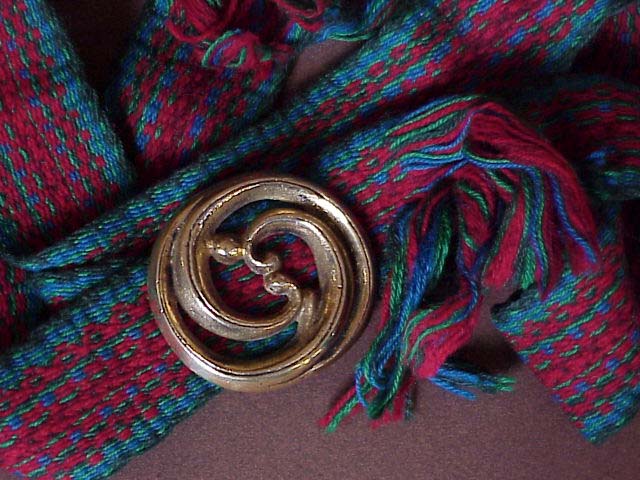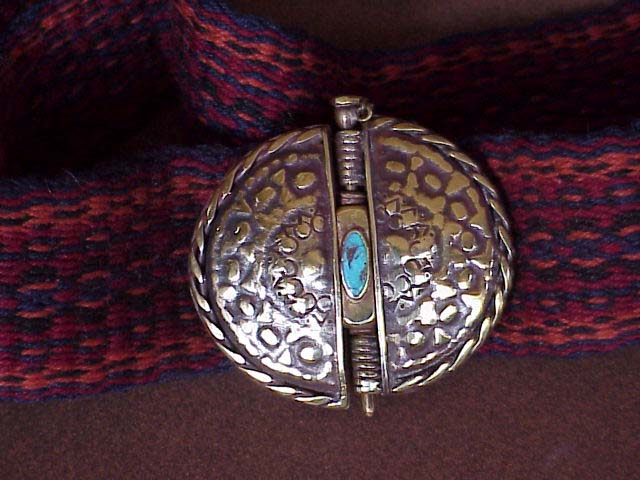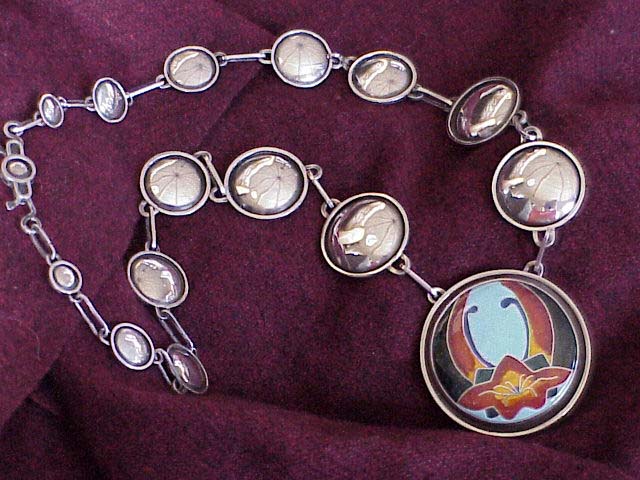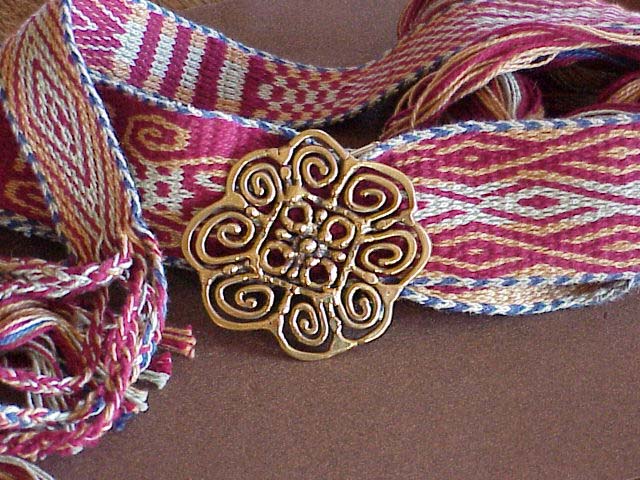 |
Ancient Nordic Tablet Woven Belt With
Brazed Bronze Buckle. Warp twined weaving has it's origins in many cultures. Examples of tablet weaving, have been discovered in diverse locations including Egypt ( dating from 945 B.C.), Germany and Sweden ( 4th Century B.C.) and Western Asia ( Turkestan, A.D. 750). |
||
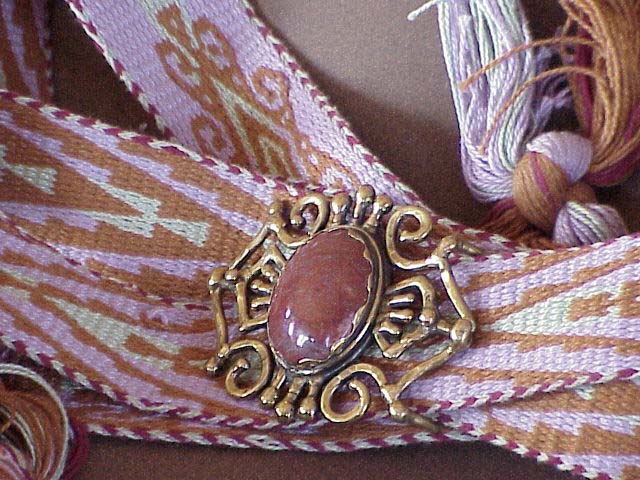 |
Jasper Agate and Brazed Bronze Buckle
for Tablet Woven Cotton Belt. Here the brazed buckle, set with a colorful jasper agate collected from local volcanic outcroppings, emulates the simple geometric patterns of ancient cultures. Bronze metal brazing is an artistic expression of industrial brazing techniques developed with the invention of the oxy-acetylene system for metal fabrication in the early 1900's. The spontaneity the artist achieves with the brazing technique results in a palpable fluidity of design. |
||
